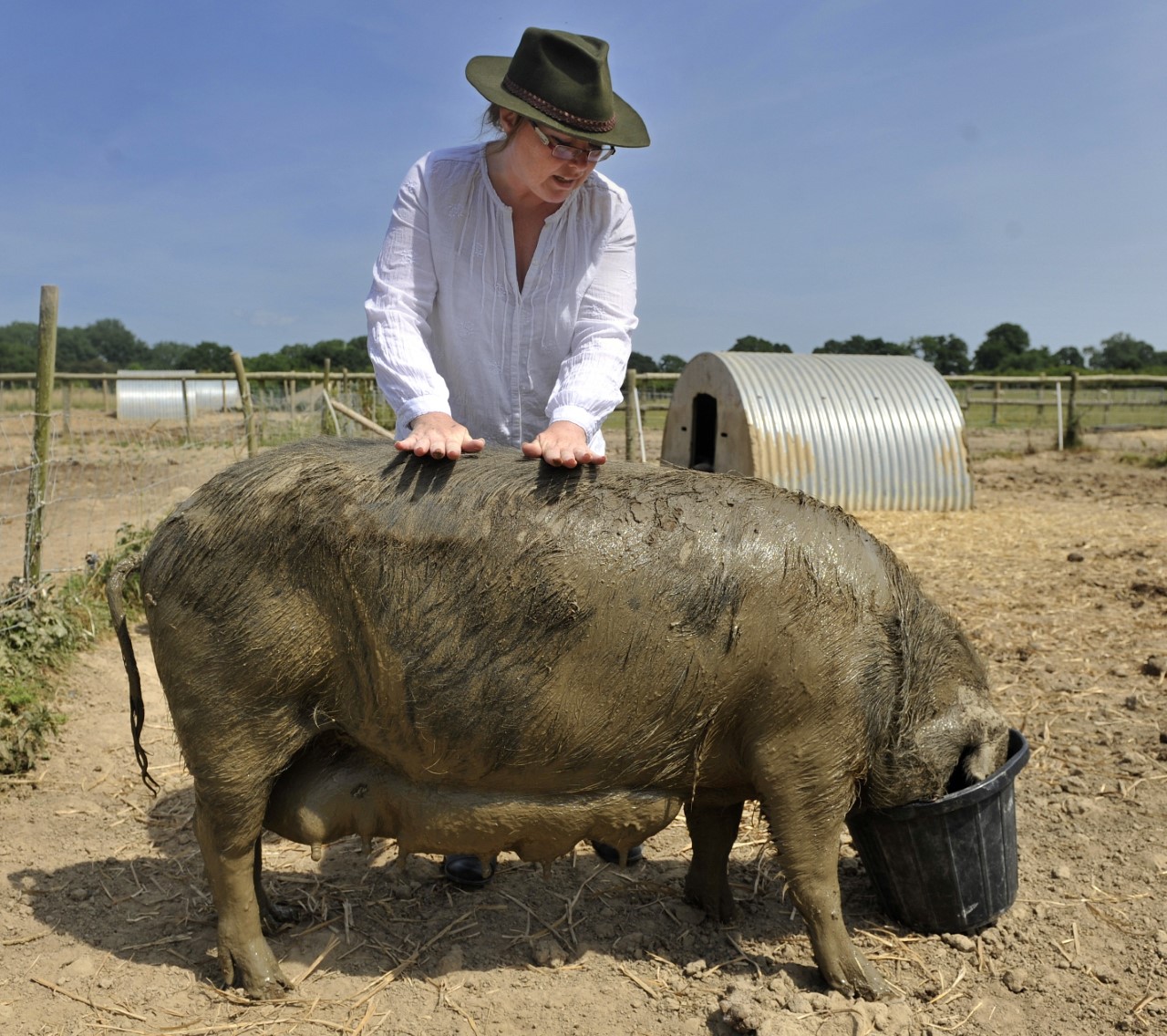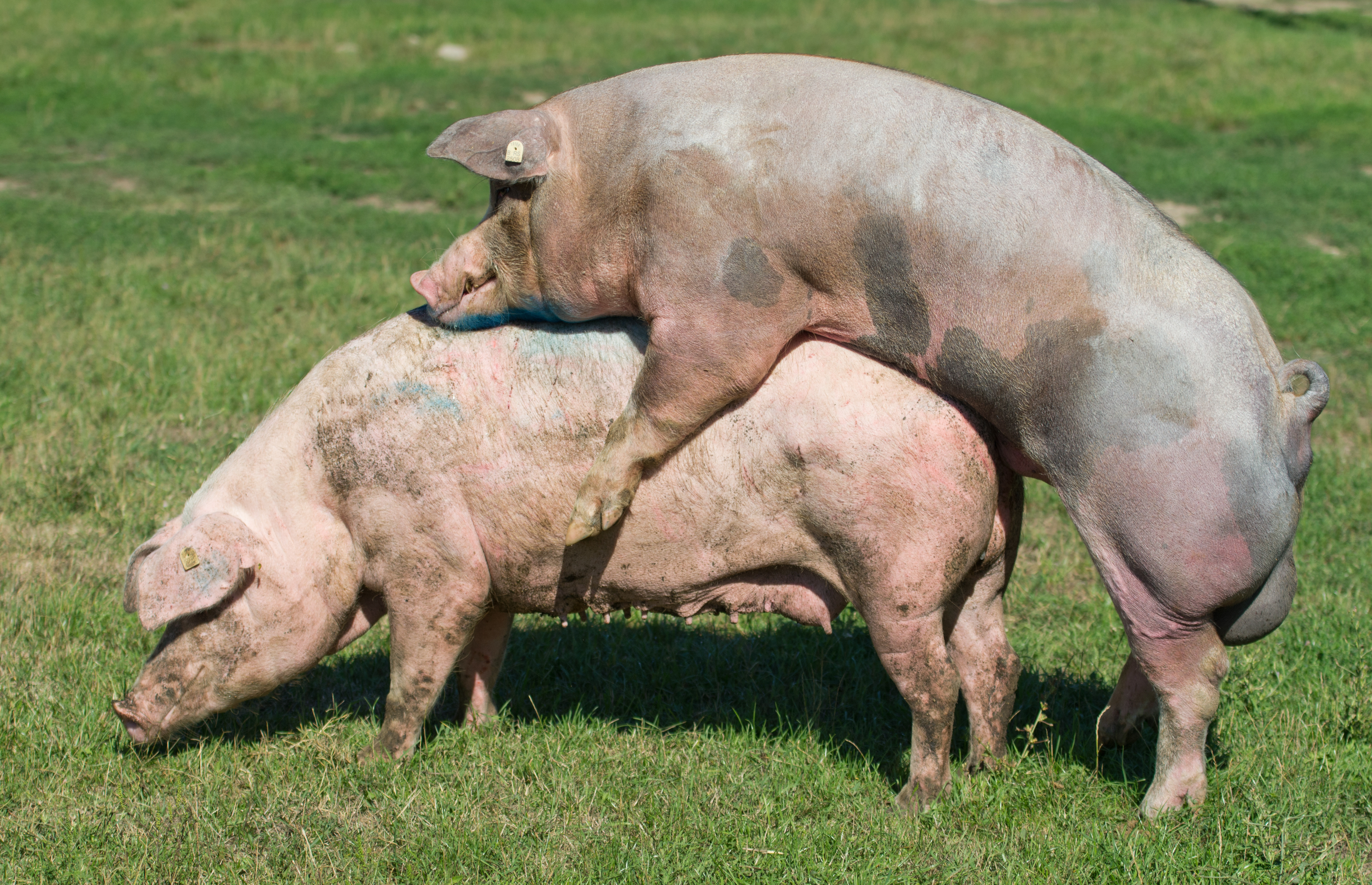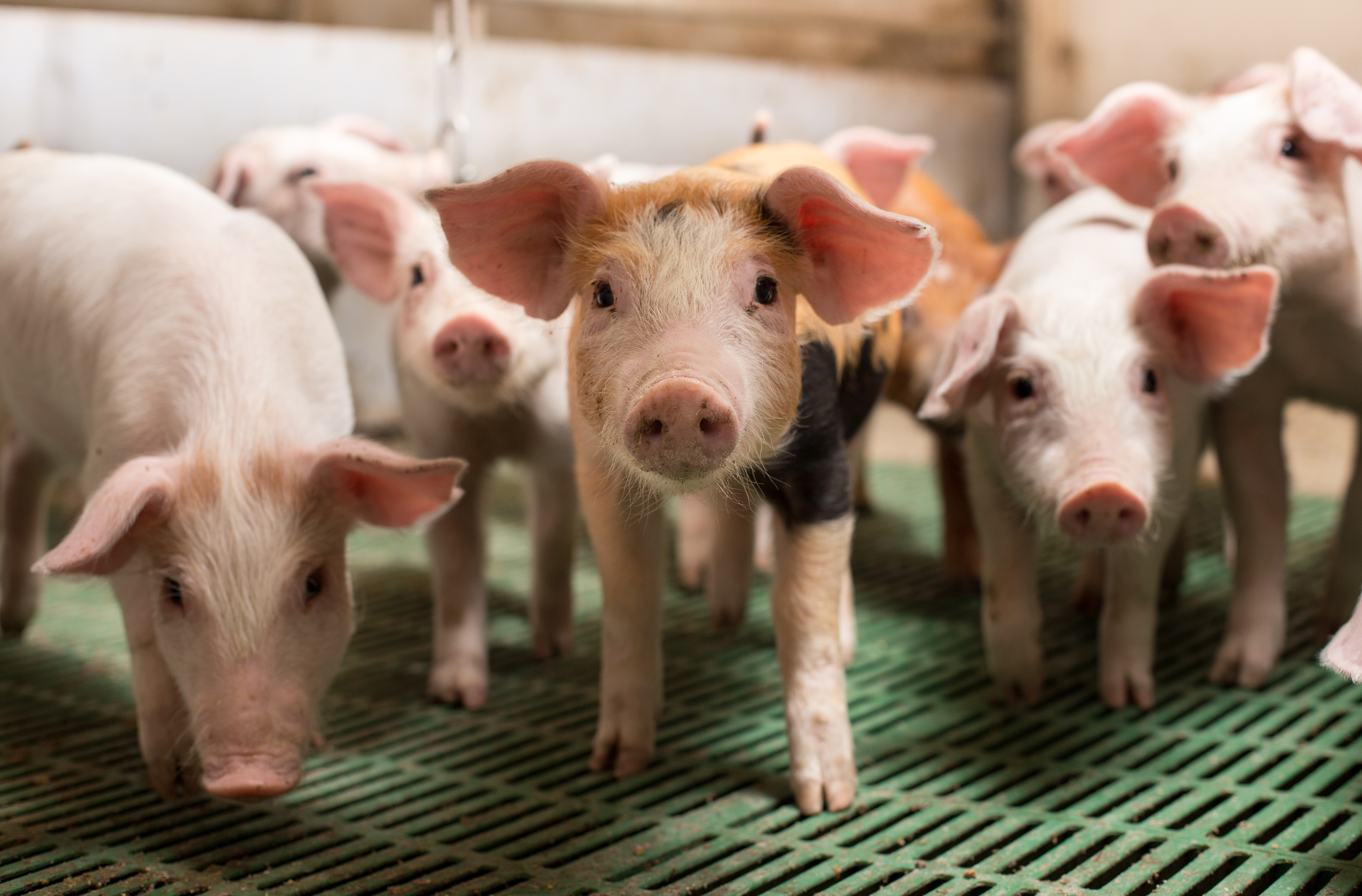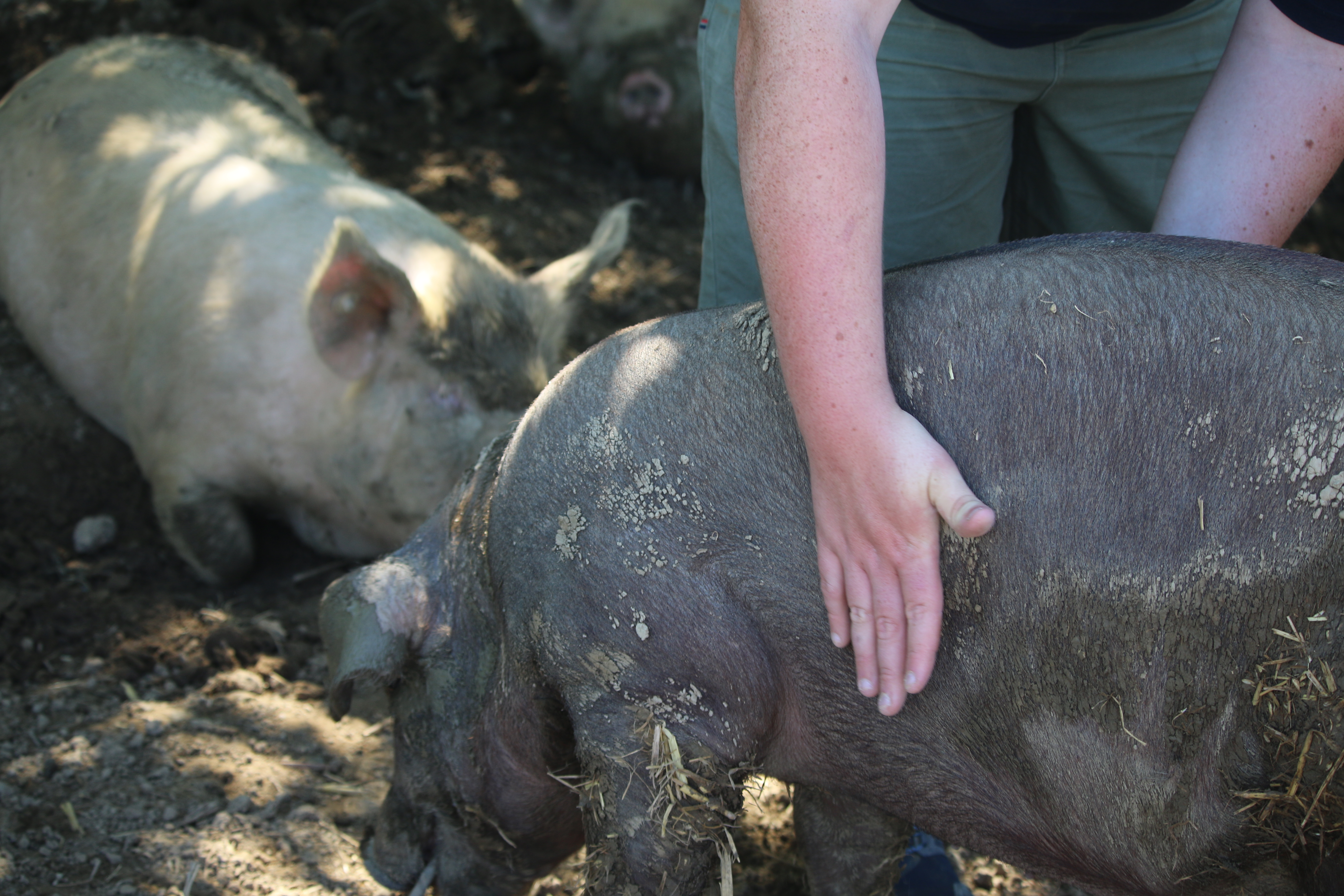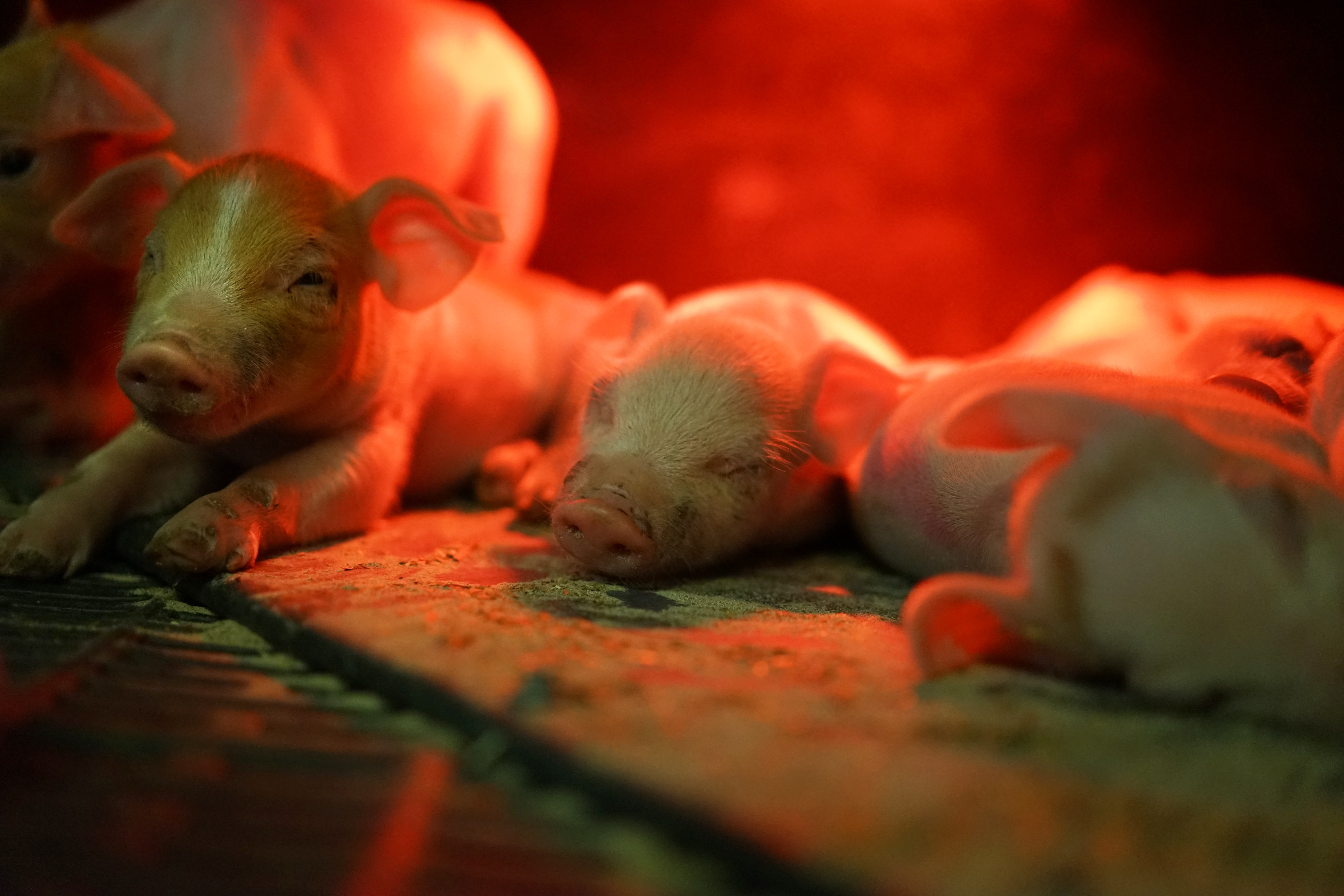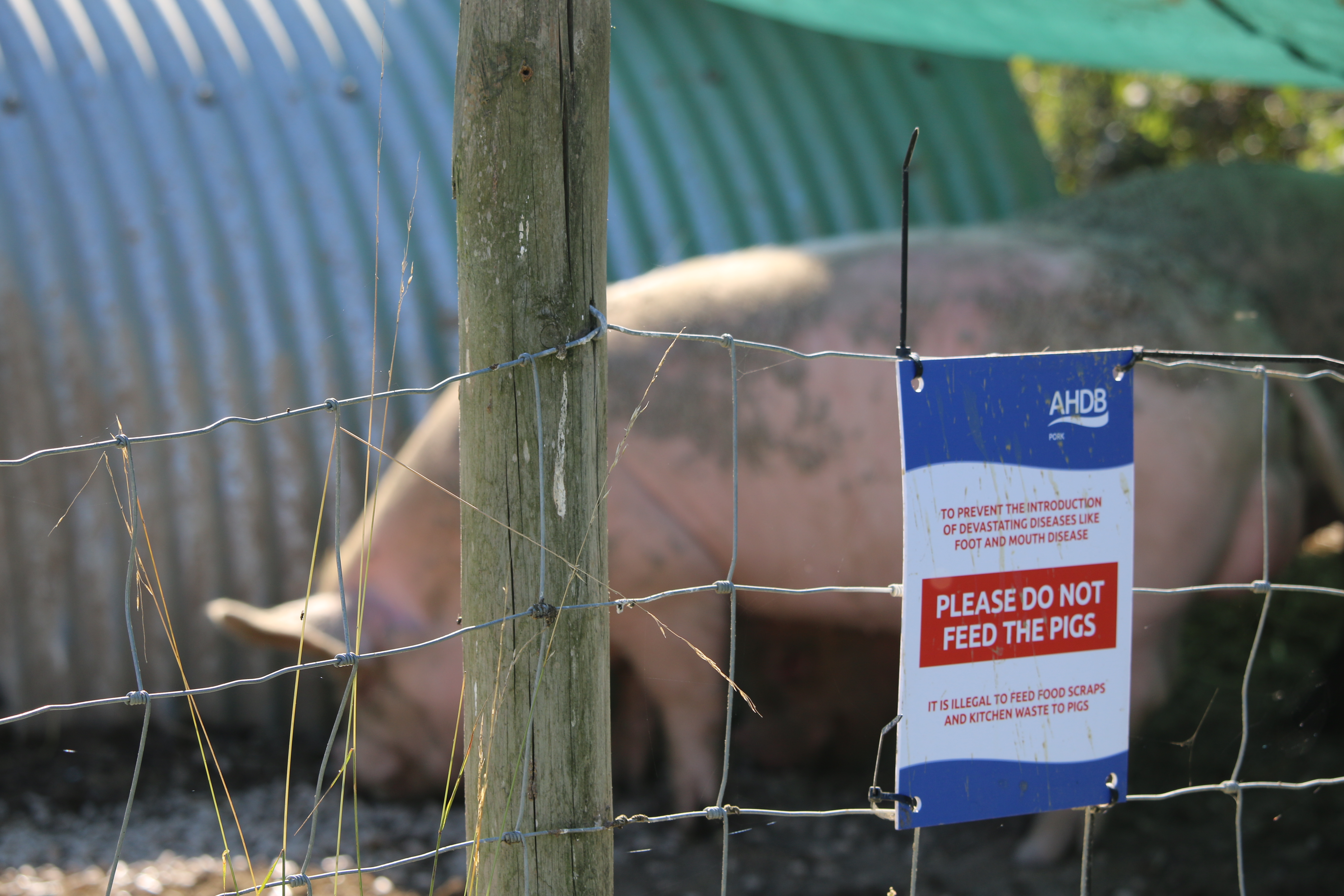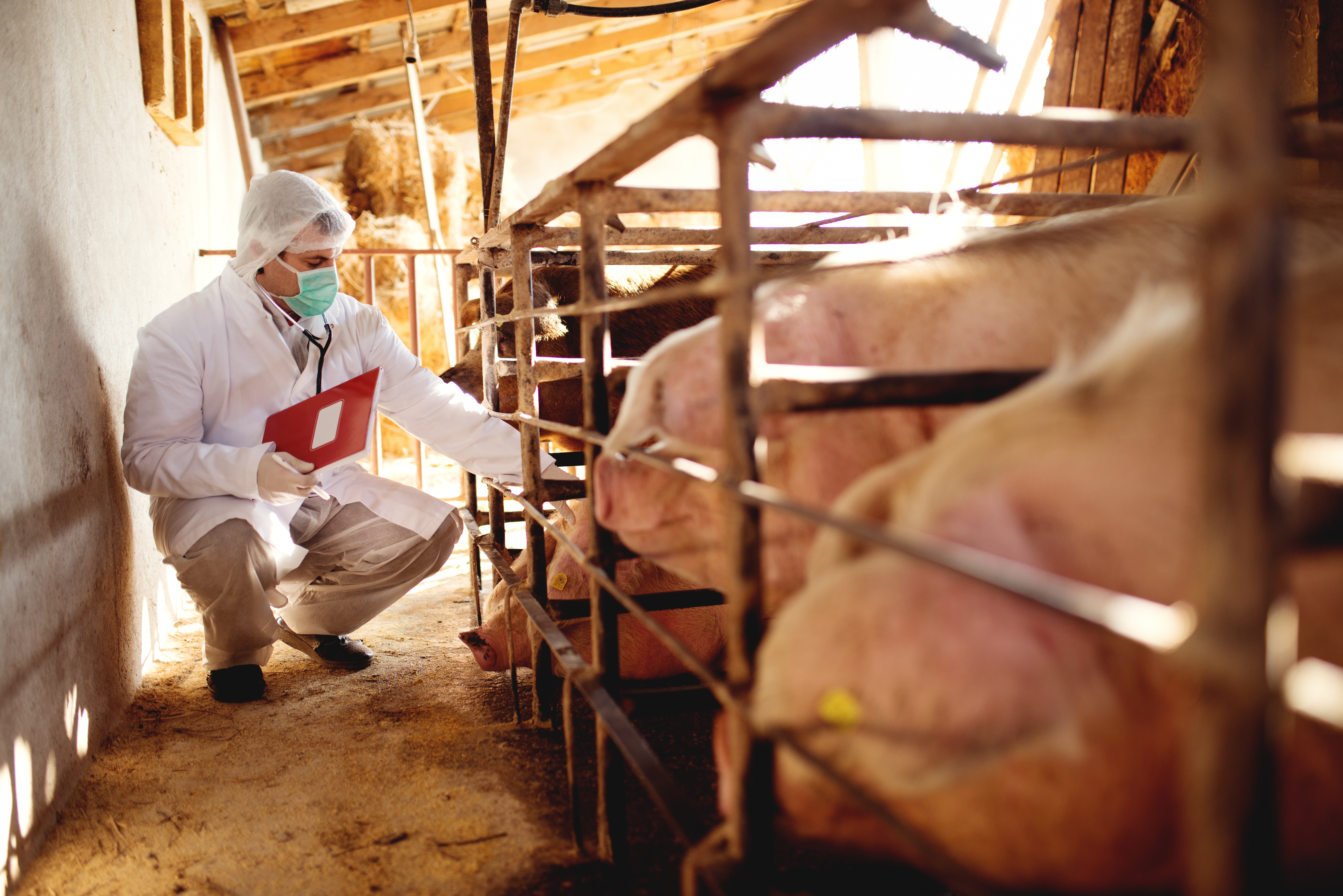



Small-scale pig keeping: selecting pigs for breeding
When selecting for breeding purposes you need to maximise your chances of a successful outcome i.e. healthy litters of piglets, problem-free farrowing and a careful dam supplying plenty of milk.Part of Series:
< Previous Article in Series Next Article in Series >
Providing your pigs with the best chance
To give the dam the best chance of being able to carry and rear piglets you need to first check that she has a an evenly spaced teat alignment, with enough teats, for feeding her future piglets; a long, wide deep body so the piglets have more room to develop and to feed when growing; and of course do not breed from her if she has any deformity or obvious weakness.
To give a boar the best chance of fathering litters, they must be sound. A willingness to perform when lame or with sore feet, especially hind feet, is less likely to happen. Both testicles must have descended to maximise fertility and the penis/sheath ideally needs to be positioned so it will be near the vagina when mounted. A reasonable guideline is to have three sets of well-placed teats before the sheath when selecting boars for breeding. The placement of teats is an inherited trait from the sire and the dam, so it is important that boars with good underlines are also selected.
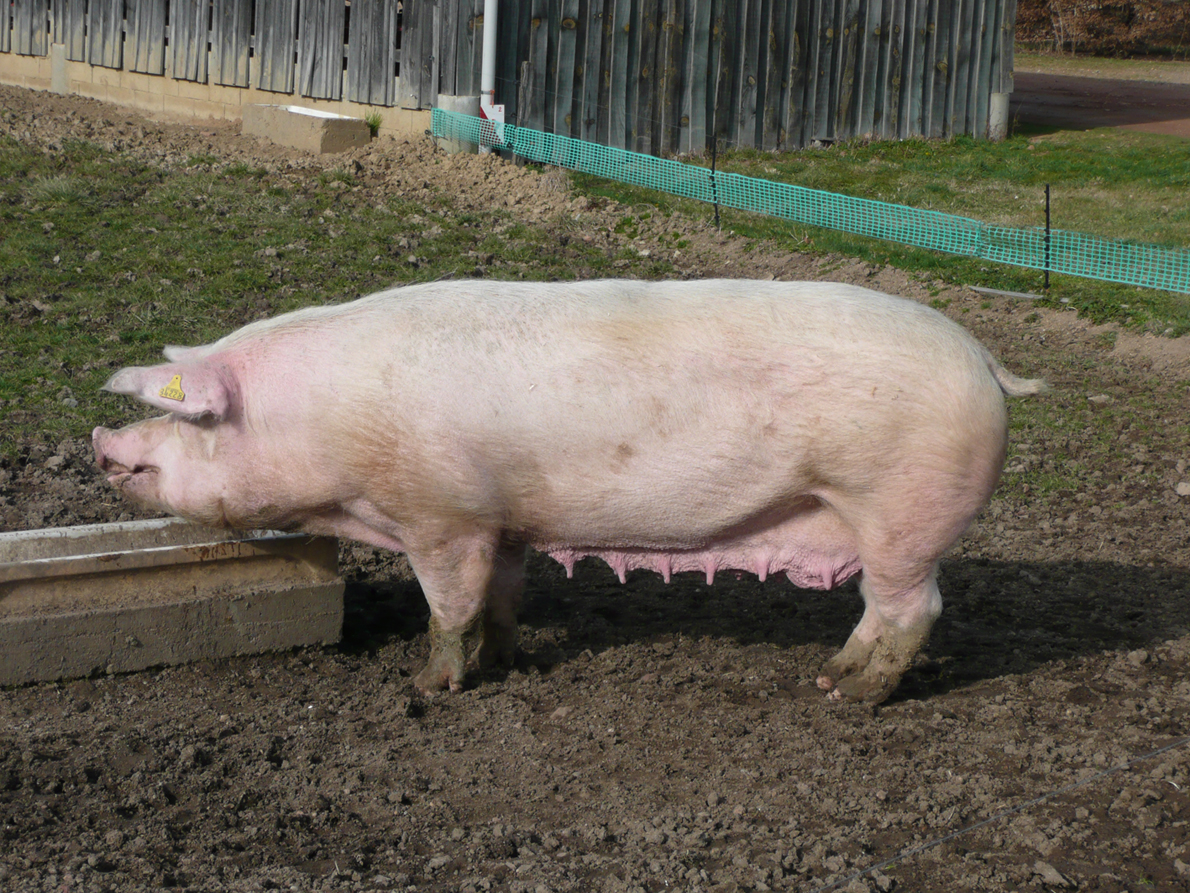
Standards and criteria
The breeders of pedigree pigs have a strict criteria to adhere to before being able to register any pigs as breeding stock. These are published as ‘breed standards’ or ‘standards of excellence’ by the appropriate registering authority. In the UK this is the British Pig Association (BPA), the British Lop Pig Society and the British Kune Kune Pig Society. Every registered pig has to be a good example of the breed.
While some standards relate to phenotypic appearance of the breed and the absence of congenital defects, some relate directly to the ability to function as a breeding animal. Every registered pig in a breeding programme also has their fecundity recorded, so you can look up the statistics held on litter sizes sired or farrowed, the ability of the dam to rear piglets to three weeks of age; and those in each registered pig’s lineages. If the pig you are buying comes from a long line of ancestors with a good fecundity then you’re maximising the probability of getting a fertile pig to breed from. Of course, with some of the rare breeds, the conservation of a bloodline may be your driving factor and some bloodlines might be rarer because of a low fecundity for a variety of reasons - they could take longer to conceive; have smaller litters; have weaker litters with lower survival rates or even have a genetic trait of squashing their piglets - but you will at least know. They could of course just not have been used as often in recorded breeding programmes. A survey of every bloodline within each breed is taken each year, so identifying rarer bloodlines is easy to achieve and the BPA has recently introduced a geographical map of all the breeds and bloodlines within the UK and, due to the risk of serious diseases entering the UK, wants representatives of each bloodline sited across the UK to assist in securing the future of all bloodlines. You can therefore ‘do your bit’ for conservation even with prolific bloodlines.
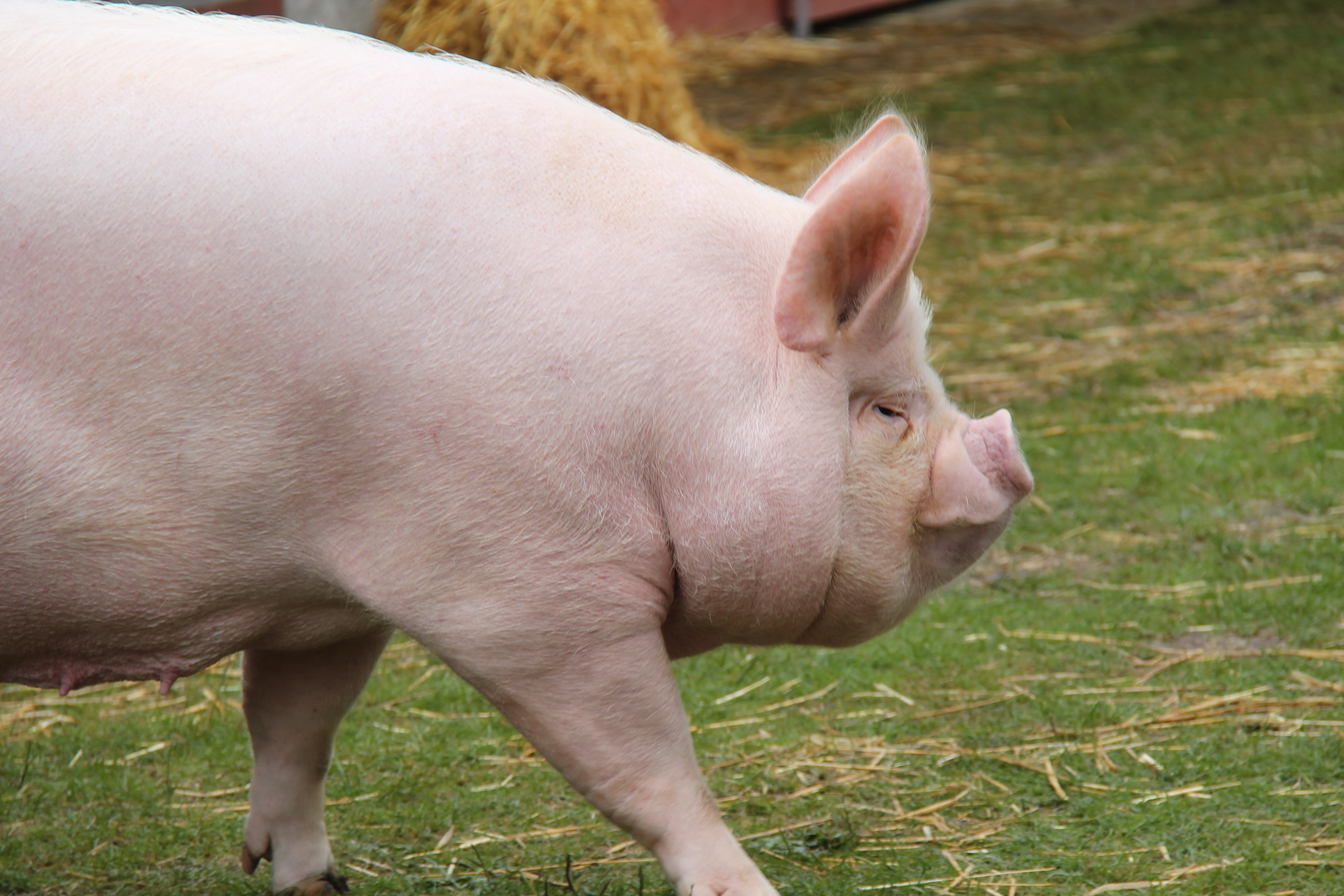
The remainder of the standards govern shape and conformation - without a strong conformation, the longevity of breeding life will be challenged. The weight of a fully grown boar and/or a pregnant sow will expose conformational weaknesses especially in the locomotive system, hence this factor is highly influential in the selection process. These weaknesses can also contribute to sows not being able to get up quickly if she accidentally lies on a piglet and increasing the number of overlays and piglet deaths.
When buying registered breeding stock, the weaner, gilt or sow will already conform to the minimum requirement of the breed standard. It is worth having a quick check yourself, especially if you have more than one choice in the litter. Getting to know your breeds’ standards will help you pick the best one though it’s worth employing an experienced breeder or a Breed Representative of your breed the first time you start buying registered pigs. If funds are limited and you have to be strategic, then go for the best boar you can afford as he is going to be half your breeding herd.

You also have to consider when to cull underperforming stock. As small-scale keepers, we tend to give a breeding pig more chances than could be afforded in the commercial world. In some instances this is justified, for example, if sows/gilts return to service and are not getting pregnant with a boar that previously sired litters, then look back to see if he has been unwell as it can take many weeks for sperm production to recover. Another example is when a particular bloodline is at risk of being lost and every chance to produce offspring must be taken. However once breed standard replacements have been bred then culling helps reduce sub-par fertility in your herd.







